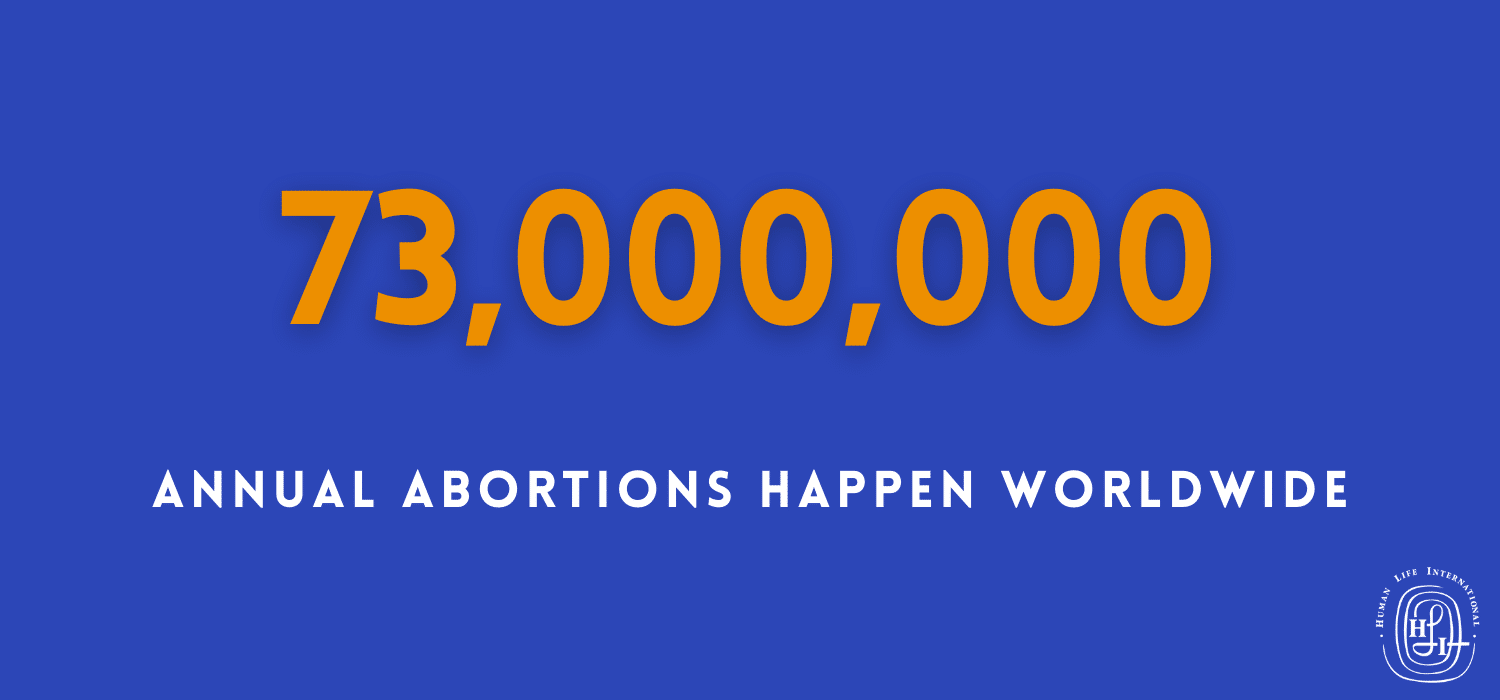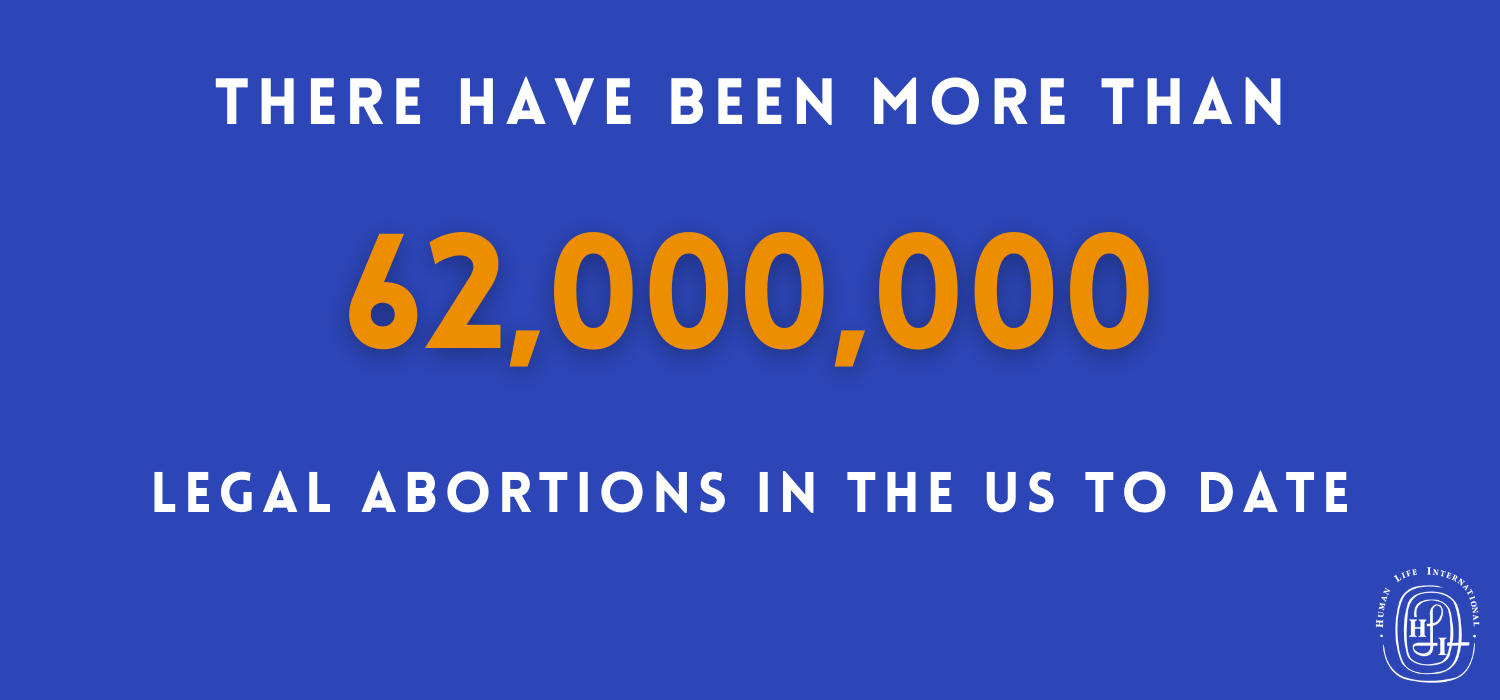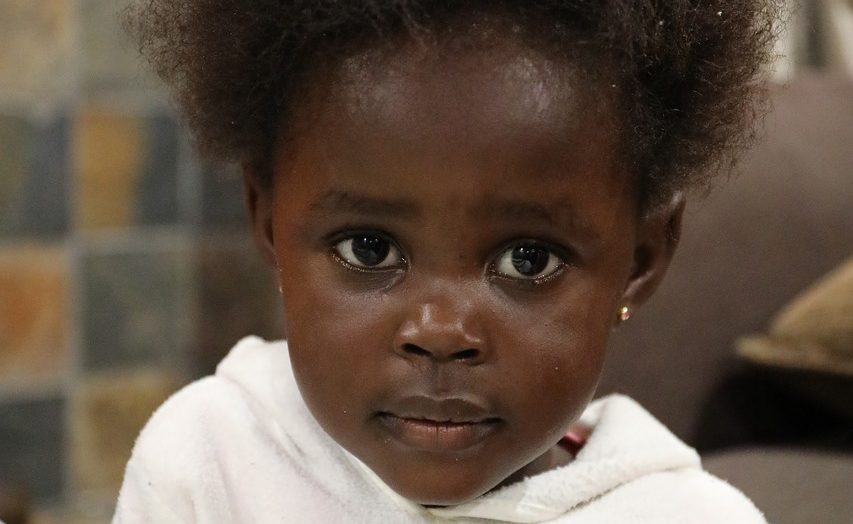Visualizing Abortion Statistics: Who’s Being Killed and Why?

Dr. Brian Clowes has been HLI’s director of research since…
Yale professor Edward Tufte is an information guru. He travels the world teaching people the art of “data visualization,” or how to most effectively present the power and the beauty of evidence. His work highlights the fact that the battle over social issues is largely one of images that activists from all sides attempt to establish in people’s minds.
No battle is richer in imagery than the struggle over abortion. We have seen everything from coat hangers to roses, ultrasound photos of preborn babies, faked photos of women killed by illegal abortions, panel trucks with giant bloody aborted-baby pictures on them, and NARAL’s “Silent No More” debacle, where weeping women described in great detail the suffering of their (mostly imaginary) women relatives at the filthy hands of drunk illegal abortionists.
We pro-lifers can increase the impact of our message if we cultivate our “visual literacy.” The average pro-lifer doesn’t have access to the sophisticated technical equipment needed to make his arguments visually gorgeous, but he does have the power of imagination.
And our imagination is one of the critical tools that will, in the end, win the abortion battle. As none other than Joseph Stalin said, “Ideas are more powerful than guns.”
The reality is clear, as are the statistics: According to the World Health Organization, “around 73 million induced abortions take place worldwide each year.”

So how do we get people to look at abortions as killing a baby rather than as mere statistics? If we can’t get people to care about the millions of dead preborn babies, we will never get them interested in specific preborn babies whom they will never see.
Pro-abortionists tend to strongly resist using hard facts and statistics because they do not support the “pro-choice” position. Instead, they ignore facts and statistics and lean on emotional appeals and feelings to make their points.
When we use documented statistics backed up by visual imagery during written or oral attempts to persuade, we elevate the debate above emotions and appeal directly to logic and reason. No pro-abortionist can refute documented statistics ― especially when they originate with pro-abortion sources, which eliminates the inevitable accusations of “anti-choice bias.”
Illustrating Statistics on Abortion
The old saying that a picture is worth a thousand words has never been more important, because people these days are persuaded by imagery, not words. Therefore, we can increase our impact by painting vivid “word pictures” to illustrate our points during discussions or debates.
A pro-lifer makes a tremendous impact on listeners by using his imagination to relate the abortion issue to everyday images that people are familiar with. In other words, we can frame the issue in terms that people understand and will therefore remember.
The statistic is sobering: As of February 2021, there have been over 62 million legal surgical and medical abortions in the United States.

The worst year was 1990 with 1,608,600 abortions; since then, the number of abortions has declined almost every year to the current level of just under 900,000 annually, partly due to never-ending pro-life efforts and partly due to the “ripple effect” of having fewer young women who are aborting. This phenomenon is itself a reflection of the sad fact that there are fewer young women because many of their would-have-been mothers were themselves aborted 20 to 25 years ago.
The Vietnam Memorial

A good way to get people to think is by asking if they have visited the Vietnam Memorial in Washington, D.C. This memorial is a shiny black wall that stretches 492 feet and lists the names of the 58,209 known Americans killed in that war. If such a wall listed the names of the more than 62 million babies legally killed by surgical and medical abortions in the United States, it would be over 90 miles long!
Knowing that there are 73 million abortions worldwide each year, the number of abortions in just 38 years would equal about 2.78 billion preborn babies wiped out by surgical and medical abortions worldwide. If we built a way to commemorate just these, it would stretch more than a thousand miles farther than the distance from Los Angeles to New York City.
Cemeteries for Preborn Babies
Pro-life activists frequently set up temporary displays of thousands of crosses representing the number of preborn babies killed by abortions in the United States every day. These crosses make a riveting display of the brutal reality of abortion (at least until they are torn down by pro-abortion vandals). If standard burial plots were allocated to each preborn child killed by surgical abortion in the United States, the resulting cemetery would cover more than 300 square miles.

If there were a cemetery for all of the 2.78 billion preborn babies killed by surgical abortions in the world since 1960, it would cover more than 13,000 square miles ― larger than the states of Connecticut, Delaware, Hawaii, Maryland, Massachusetts, New Hampshire, New Jersey, Rhode Island, or Vermont. But, because of “freedom of choice,” these billions of children will never see the light of day.
Holding Hands
If these 62 million babies had been born and had grown up, then had gotten together to hold hands, the resulting line would stretch around the world at the equator more than two and a half times ― more than 65,000 miles!
A Much Larger “Quilt Project”
For several years, American homophile activists promoted the “Quilt Project,” where 3-foot by 6-foot rectangles of cloth decorated with the stories of victim’s lives were laid side by side. The primary purposes of this project were to generate sympathy and show the magnitude of the AIDS epidemic. The largest such display to date has covered an area equivalent to a football field.
If 62 million of these quilts were laid down adjacent to each other, one for each aborted preborn baby, it would cover an area of 39 square miles!
This quilt would easily blanket the central districts of any large city. You can mention landmarks bounding this area in the appropriate city in order to strengthen your point. For example, let us suppose that a circular quilt commemorating all of the preborn babies in the United States who have died from abortion were laid over Washington, D.C., centering on the White House. This quilt would cover Crystal City and Reagan National Airport in the South, the Smithsonian Zoo in the North, all of Georgetown in the West and the National Arboretum to the East.
The “Marching Aborted”
During the height of the population scare in the late 1960s, bigoted anti‑population alarmists sometimes referred to their fear of “the marching Chinese.” They meant that the population of the People’s Republic of China was increasing so fast (21 million per year at that time) that the Chinese could march two abreast past a single point and never have the same person pass twice.
We can adapt this concept to describe the magnitude of the “marching aborted.” There are about 73 million surgical and medical abortions committed all over the world annually. If these children marched past one point continuously for 24 hours a day, they would be more than four abreast.
Crashing School Buses
The World Health Organization claims that around the world each year “4.7–13.2% of maternal deaths can be attributed to unsafe abortion…. In developed regions, it is estimated that 30 women die for every 100,000 unsafe abortions. In developing regions, that number rises to 220 deaths per 100,000 unsafe abortions.” This is roughly the equivalent to the death toll of a fully loaded jumbo jet crashing every 12 hours, year-round, with no survivors.
We can adapt this visual imagery for the aborted babies. For example, any community would mourn for weeks if a school bus full of fifty children crashed, killing all inside. If we assume that the abortion mills in this country are operating fifty hours per week, fifty babies are killed every eight minutes!
A pro-life debater could also tailor this image to a local abortuary ― for example, one that killed 2,500 babies every year would be equivalent to a fifty-child school bus crashing every week.
The Dead States
Abortionists have killed a number of children more than the combined populations of eighteen states: Arizona, Arkansas, Colorado, Idaho, Iowa, Kansas, Minnesota, Missouri, Montana, Nebraska, Nevada, New Mexico, North Dakota, Oklahoma, South Dakota, Utah, Washington. and Wyoming. A map of the US with all of these states blacked out is a real attention-grabber. This gives an audience some idea of the colossal magnitude of the abortion disaster.
Abortion has killed a population more than that of these 18 states
But if someone thinks that this is not particularly impressive since these states are the most sparsely-populated in the United States, consider this: surgical abortion has killed enough preborn children to occupy more than the top 50 most populated US cities.
In short, images are excellent tools for describing the sheer magnitude of the abortion disaster, which has killed the equivalent of the population of eighteen of the western states or more than the 50 most populated cities in the nation. One superb example of the use of imagery is a comparison between the numbers of people killed in all American wars and the number of people killed by abortion as of 2011. For an eye-opening visual, Life Dynamics uses small beads to represent the relative number of deaths.
https://www.youtube.com/embed/B7KczyypCzk?feature=oembed
Statistics on Abortion: Why Women Abort
Other areas in which imagery can be very helpful in reaching people are the frequency of the “hard cases,” the terrible toll that abortion is having on minorities, and the reasons women give for late-term abortions.
The classic hard cases are abortion for rape and incest, birth defects, and to preserve the life and the health of the mother. Pro-abortionists rely heavily upon these rare abortions to make their points, and they do their very best to exaggerate their frequency.
In reality, most abortions are performed for reasons that have nothing to do with either the mother’s or the baby’s health. An article in the journal BMC Women’s Health discusses research conducted with respondents who were asked about reasons why they had abortions. Forty percent said they were not financially prepared. Thirty-six percent said they had the abortion because the timing was bad, they were not ready, or the pregnancy was unplanned. Twenty-nine percent said they wanted to focus on other children. Twenty percent said they wanted to focus on career or school. Only 12% said they were concerned about their health or the baby’s health—and that included reasons such as drug addiction, alcohol use, tobacco use, or the use of medications.
Further, the reports that just 1% of women who have an abortion have it because they became pregnant as a result of rape, and fewer than 0.5% have an abortion because of incest. Recent data from the CDC shows similar results.
Thus, we see that abortion has become nothing more than a social eraser for embarrassing situations, since 85.7 % of all abortions are performed on unmarried women.
Do not be afraid to tell and show the truth: The overwhelming majority of abortions are performed for social or economic reasons. Even as we focus on accurately presenting data on the reasons women give for abortion, we must be absolutely clear that there are no justifiable reasons to kill either a born or preborn person. When a mother’s life is at risk during a pregnancy, we must do our best to save both lives. Nor should a disability, regardless of how severe, be a death sentence for a preborn child.
Statistics on Abortion by Race
An especially sensitive area for pro-abortionists is any publicity regarding their systematic targeting of minority babies.
In 2015, the Center for Urban Renewal and Education reported on the effects of abortion in the black community:
Disproportionally, the leading consumer of the abortionists’ services is the African American female. According to the 2011 Abortion Surveillance Report issued by the Center for Disease Control, black women make up 14 percent of the childbearing population, yet obtained 36.2 percent of reported abortions. Black women have the highest abortion ratio in the country, with 474 abortions per 1,000 live births. Percentages at these levels illustrate that more than 19 million black babies have been aborted since 1973.
Four years later, we see continued evidence. According to the CDC’s latest surveillance report (2019):
Among the 30 areas that reported race by ethnicity data for 2019, non-Hispanic White women and non-Hispanic Black women accounted for the largest percentages of all abortions (33.4% and 38.4%, respectively), and Hispanic women and non-Hispanic women in the other race category accounted for smaller percentages (21.0% and 7.2%, respectively)…. Non-Hispanic White women had the lowest abortion rate (6.6 abortions per 1,000 women) and ratio (117 abortions per 1,000 live births), and non-Hispanic Black women had the highest abortion rate (23.8 abortions per 1,000 women) and ratio (386 abortions per 1,000 live births).
We have seen that the US’ 62 million abortions have wiped out more than the equivalent population of eighteen western states that cover more than one-half of the area of the contiguous United States. Now imagine for a moment that every black person simply vanished from the American South ― from El Paso, Texas, to the Outer Banks of North Carolina and from Knoxville, Tennessee, to Key West, Florida. That is roughly the number of African American preborn children who have been killed by legal abortion.

Put another way, black patients accounted for 28% of abortion procedures. In 2014, there were 259,333 black Americans killed by abortion. When we do some math, we find that 710.5 babies were killed every day that year. At 710.5 per day, it takes just under five days for 3,446 black Americans to be killed by abortion. That’s the same number that was killed by lynching between 1882 and 1968.
Late-Term Abortion Statistics
As far as late-term (second- and third-trimester) abortions are concerned, we have heard a constant drumbeat of propaganda from the pro-abortionists and their media toadies about just how rare they are and how they are only performed for the most serious conditions. During the battle over the Partial-Birth Abortion Ban Act, Planned Parenthood claimed, “The procedure, dilation and extraction (D&X), is extremely rare and done only in cases when the woman’s life is in danger or in cases of extreme fetal abnormality.”
The Guttmacher Institute performed a survey of a large number of women obtaining late-term abortions and asked them their reasons for doing so.1 It found that only about one percent of second- and third-trimester abortions are performed for fetal anomalies, or eugenics. Almost half (45%) of the women surveyed said that they didn’t know about the pregnancy; one-fourth (27%) said that they found it hard to arrange an earlier abortion; 20% said that they disagreed about the abortion with the child’s father; and the rest gave reasons such as taking their time to decide.
Final Thoughts
Ron Fitzsimmons, executive director of the National Coalition of Abortion Providers, said:
When you’re a doctor who does these [partial-birth] abortions and the leaders of your movement appear before Congress and go on network news and say these procedures are done in only the most tragic of circumstances, how do you think it makes you feel? You know they’re primarily done on healthy women and healthy fetuses, and it makes you feel like a dirty little abortionist with a dirty little secret…. I think we should tell them the truth, let them vote and move on.
We have allowed the abortion industry and its supporters to keep their “dirty little secrets” for far too long. The only cure for this campaign of lies is for every single pro-life person to learn the issues and then to talk about them with everyone they know ― friends, family members, fellow churchgoers, and coworkers. Only a widespread program of education conducted by millions of persistent pro-lifers will remedy the false impressions the public has on abortion. When this happens, pro-life victory will be much nearer.
Endnote
[1] Diana Greene Foster and Katrina Kimport. “Who Seeks Abortions at or After 20 Weeks?” Perspectives on Sexual and Reproductive Health [Guttmacher Institute], December 2013 (Volume 45, Number 4), pages 201 to 218. At https://www.guttmacher.org/journals/psrh/2013/11/who-seeks-abortions-or-after-20-weeks.Reasons given (272 women replied; totals add up to more than 100% because most women gave multiple reasons):
- “Raising money for the procedure and related costs” – 65%
- “Not knowing about the pregnancy” – 45%
- “Difficulty securing insurance coverage” – 41%
- “Trouble deciding about the abortion” – 40%
- “Not knowing where to go for an abortion” – 38%
- “Difficulty getting to an abortion facility” – 27%
- “Disagreeing about the abortion with the man involved” – 20%
What's Your Reaction?
Dr. Brian Clowes has been HLI’s director of research since 1995 and is one of the most accomplished and respected intellectuals in the international pro-life movement. Best known as author of the most exhaustive pro-life informational resource volume The Facts of Life, and for his Pro-Life Basic Training Course, Brian is the author of nine books and over 500 scholarly and popular articles, and has traveled to 70 countries on six continents as a pro-life speaker, educator and trainer.

















